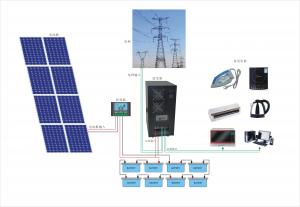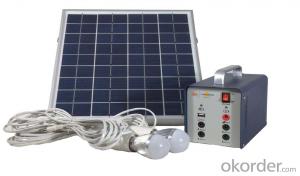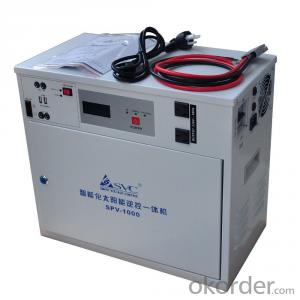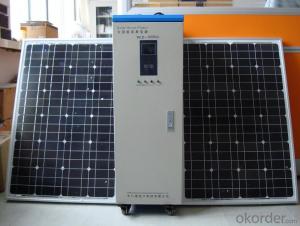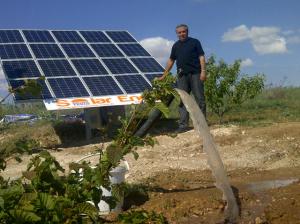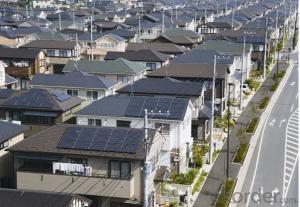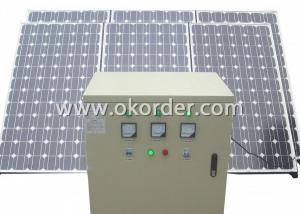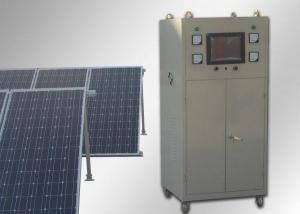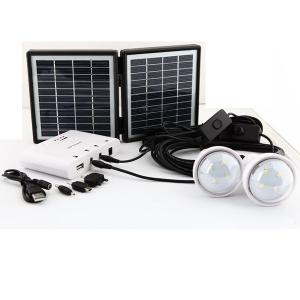Carolina Solar Energy Systems Complete 24V 1000W Stand Alone Solar Systems
- Loading Port:
- Guangzhou
- Payment Terms:
- TT OR LC
- Min Order Qty:
- -
- Supply Capability:
- 1000sets set/month
OKorder Service Pledge
OKorder Financial Service
You Might Also Like
Features
Solar cell modules
It converts solar energy into electrical energy and the frames support solar panels.
Charge controller
It supplies direct current regulated from solar modules to the battery or inverter.
Stand-Alone Inverter
It supplies alternative current to loads after rectifying the direct current.
Battery
It supplies the electric power to loads through inverter in case the electric power generated from solar modules is in short supply or at night.
Complete 24V/1000W stand alone solar systems
5×200w poly solar panels//1×24V/50A solar charge controller//1×48V/3000W pure sine wave
inverter//4×12V/200Ah lead acid batteries//ground mounting brackets//50m PV cables for solar
panels connection//dual connectors for solar panels connection//connection cables for batteries.
average produce 6kwh power each day!!!
| 12V/200W Poly-crystalline Solar Panels | ||||||||
| Model: 200P Maximum power:200W Maximum power voltage:35V Maximum power current:5.71A Open circuit voltage:42.48V Short circuit current:6.29A Dimension:1350mm×1000mm×45mm Weight: 17.5kg Solar cells:48pieces(6×8)poly solar cells156mm×156mm;Grade A; CE certification Maximum systems voltage: 1000V | 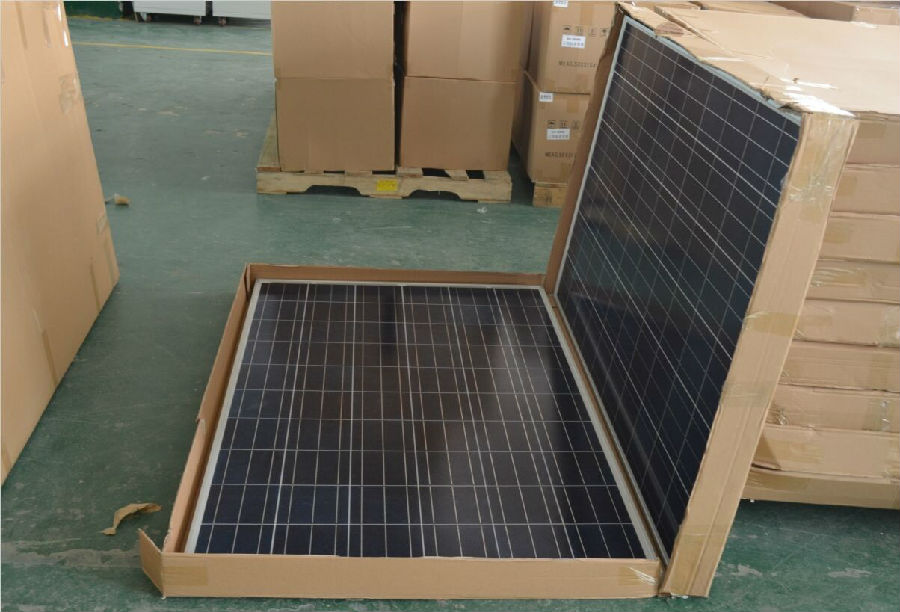 | |||||||
| | ||||||||
| | ||||||||
| | ||||||||
| | ||||||||
Wiring of solar panels: 1 panels in series, 5 strings in parallel | ||||||||
| 24V/50A solar charge controller | ||||||||
| Model:KF2450 Rated voltage: 24V Rated current: 50A Over-voltage protection 34V Over-discharge recover voltage: 25V working temperature: -20℃~45℃ Dimension: 184mm×110mm×57mm Weight: 0.66kg Features: battery switch | 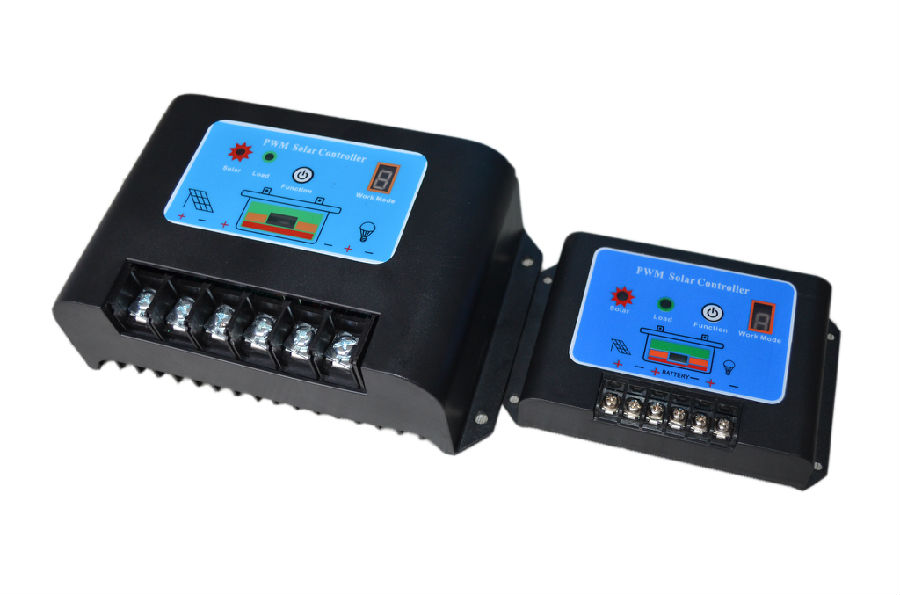 | |||||||
| | ||||||||
| | ||||||||
| | ||||||||
| | ||||||||
| | ||||||||
| Wiring of solar charge controller: firstly connect solar charge controller with battery bank, then connect solar charge controller with solar panels array, at last connect solar charge controller with loads or pure sine wave inverter | ||||||||
| 48V/3000W Pure Sine Wave Inverter | ||||||||
| Model:XD-NB10224 Rated input voltage:DC24V Input voltage range:75V~125V OR 145V~275V Output voltage:AC210V~AC240V Rated output power:1000W Maximum output power:2000W Output wave form: pure sine wave Dimension:396mm×190mm×240mm Weight:14kg. Working temperature: 0℃~40℃. Battery low voltage shutdown: DC21V | 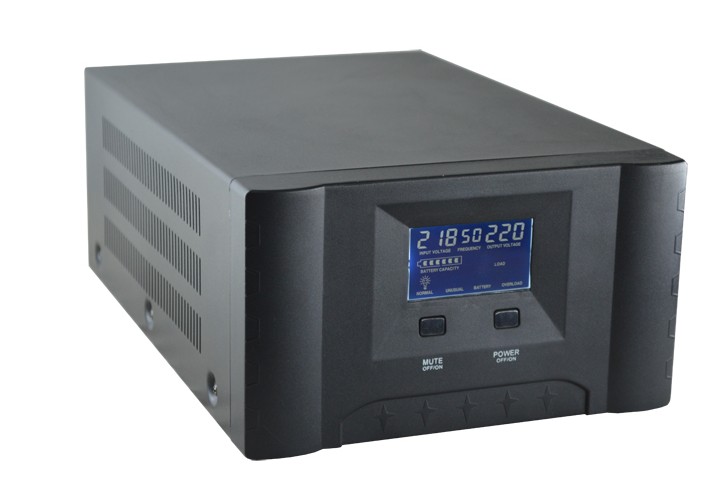 | |||||||
| | ||||||||
| | ||||||||
| | ||||||||
| | ||||||||
| 12V/200Ah deep cycle battery | ||||||||
| Deep cycle batteries in our stand alone solar systems have 2000 time charging-discharging cycle at 50% DOD. Gel batteries have better performance than lead acid batteries under cold temperature. besides, these battery are free-maintenance. |
| Package&shipment terms | |||||||||
| 1,We would pack all components into one plywood case and put much foam inside of plywood case, this packing way can make all components stand long distance transportation. 2,Because batteries are a kind of very heavy components and can't be allowed to transport by air, we have to choose sea transportation. though sea transportation would take more days to arrive, however you can save much postage. 3.We would ship the system to any bigger port near to customers, customers need to go to the port and pick up the system. |
- Q: How does shading affect the performance of a solar energy system?
- Shading can significantly impact the performance of a solar energy system. When a solar panel is partially or fully shaded, it reduces the amount of sunlight reaching the panel's surface, resulting in a decrease in electricity production. Shading on even a small portion of a solar panel can disrupt the entire system's output, as solar panels are typically connected in series, meaning the performance of one panel affects the performance of others. To minimize shading, proper site selection, panel placement, and regular maintenance are crucial.
- Q: What is the role of batteries in a solar energy system?
- The role of batteries in a solar energy system is to store excess electricity generated by the solar panels during the day so that it can be used during periods of low or no sunlight, such as at night or during cloudy days. Batteries allow for the continuous supply of electricity, making solar energy systems more reliable and independent of the grid.
- Q: Solar power generation system installation which precautions, ah, there is a need for special attention
- Solar power system consists of solar panels, solar controller, battery, inverter and other load. Solar power system installation note has the following 1, the battery plate array need to consider the installation azimuth angle, tilt angle. 2, to avoid blocking between the panels. Including the surrounding buildings (poles, building eaves, etc.). 3, stent placement stability and firmness. 4, the distance between the line and the bus box location. Try to walk a short distance and average. 5, related accessories to meet the system requirements (such as wiring column, with wire diameter etc.). 6, the terminal should be firm, to prevent the virtual connection or disconnection.
- Q: Is it possible to store excess electricity generated by a solar energy system?
- Yes, it is possible to store excess electricity generated by a solar energy system. One common method of storage is through the use of batteries. Solar energy systems can be equipped with battery banks that store the excess electricity generated during the day for use during the night or when there is low sunlight. These batteries can be charged and discharged as needed, providing a reliable and continuous power supply even when the sun is not shining. Another method of storing excess electricity is through grid-tied systems. In this setup, when the solar energy system generates more electricity than is being used, the excess power is fed back into the electrical grid. This excess power is credited to the homeowner's account, and they can use these credits to draw electricity from the grid during times when their solar panels are not producing enough power, such as at night or during cloudy days. Both battery storage systems and grid-tied systems provide a way to store and utilize excess electricity generated by a solar energy system, ensuring that no energy goes to waste and enabling homeowners to have a reliable and uninterrupted power supply.
- Q: How does a solar thermal system use sunlight to heat water or air?
- A solar thermal system uses sunlight to heat water or air by capturing the sun's energy through solar collectors, typically located on the roof. These collectors contain tubes or panels that absorb the sun's radiation and convert it into heat. The absorbed heat is then transferred to a fluid, often water or a heat transfer fluid, which circulates through the collectors. This heated fluid is then used to warm water or air, either directly or through a heat exchanger, providing a sustainable and cost-effective method of heating.
- Q: Can solar energy systems be used for drying agricultural produce?
- Yes, solar energy systems can be effectively used for drying agricultural produce. Solar drying is a sustainable and cost-effective method that harnesses the sun's energy to remove moisture from crops, fruits, vegetables, and other agricultural products. Solar dryers, such as solar air dryers and solar tunnel dryers, provide a controlled environment for drying, ensuring optimal results. This method helps preserve the nutritional value of the produce while minimizing spoilage and post-harvest losses. Additionally, solar drying reduces the reliance on fossil fuels and contributes to a greener and more sustainable agricultural sector.
- Q: How do solar energy systems affect property values?
- Solar energy systems can have a positive impact on property values. Studies have shown that homes equipped with solar panels tend to sell for a higher price compared to similar homes without solar systems. The added value can be attributed to lower energy costs, potential tax incentives, and the growing demand for sustainable and environmentally friendly properties. Additionally, solar panels are seen as a long-term investment that can provide homeowners with savings on electricity bills, further increasing the desirability of properties with solar energy systems.
- Q: Can solar energy systems be used in conjunction with other renewable energy sources?
- Yes, solar energy systems can be used in conjunction with other renewable energy sources. This combination, known as hybrid renewable energy systems, allows for a more reliable and efficient energy generation. By integrating solar energy with sources like wind or hydro power, the system can compensate for fluctuations in energy production, ensuring a consistent supply of clean and renewable energy.
- Q: How do solar energy systems impact energy conservation efforts?
- Solar energy systems have a significant impact on energy conservation efforts by providing a sustainable and renewable source of power. By harnessing the sun's energy, these systems reduce the reliance on fossil fuels, which helps to mitigate greenhouse gas emissions and combat climate change. Additionally, solar energy systems promote energy independence and decentralization, allowing individuals and communities to generate their own electricity and reduce their dependence on traditional energy grids. Overall, solar energy systems play a crucial role in conserving energy and promoting a greener future.
- Q: Do solar panels work on cloudy days?
- Yes, solar panels can still generate electricity on cloudy days, although their efficiency may be reduced. Cloud cover decreases the amount of sunlight reaching the panels, resulting in a lower energy output compared to sunny days. However, solar panels are still able to convert diffuse sunlight into electricity, making them functional even in less than ideal weather conditions.
Send your message to us
Carolina Solar Energy Systems Complete 24V 1000W Stand Alone Solar Systems
- Loading Port:
- Guangzhou
- Payment Terms:
- TT OR LC
- Min Order Qty:
- -
- Supply Capability:
- 1000sets set/month
OKorder Service Pledge
OKorder Financial Service
Similar products
Hot products
Hot Searches
Related keywords
